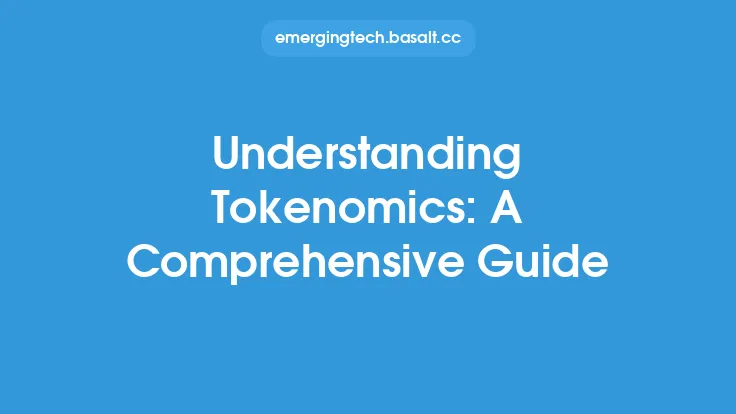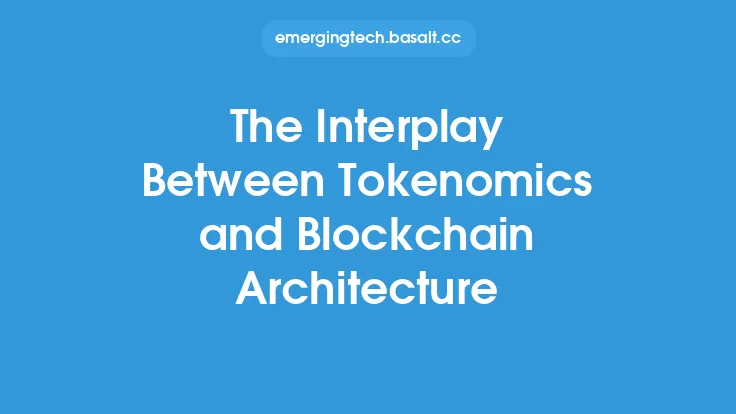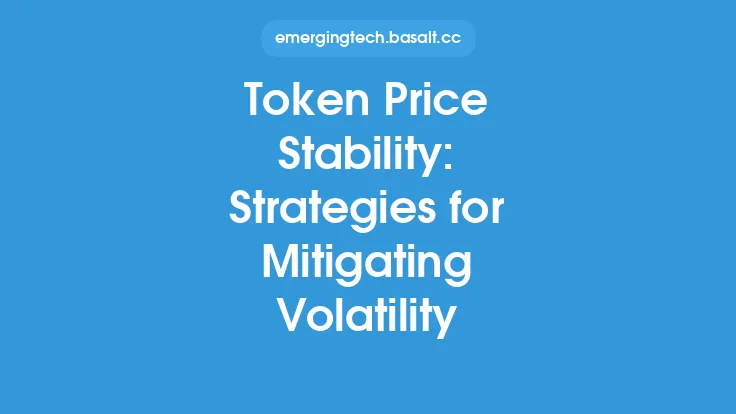The concept of token supply and demand is a fundamental aspect of tokenomics, playing a crucial role in determining the value of a token. In the context of blockchain and cryptocurrency, the supply and demand of tokens are influenced by various factors, including the total token supply, token distribution, user adoption, and market sentiment. Understanding the dynamics of token supply and demand is essential for token creators, investors, and users to make informed decisions and navigate the complex world of token economies.
Introduction to Token Supply
Token supply refers to the total amount of tokens that are available for use, circulation, or trading. The supply of tokens can be fixed or variable, depending on the token's design and the underlying blockchain protocol. A fixed token supply means that a specific number of tokens are created and distributed, and no new tokens can be minted or issued. On the other hand, a variable token supply allows for the creation of new tokens through various mechanisms, such as mining, staking, or token generation events. The token supply can have a significant impact on the token's value, as a scarce supply can drive up demand and increase the token's value, while an oversupply can lead to a decrease in value.
Factors Influencing Token Demand
Token demand, on the other hand, refers to the desire or need for a token among users, investors, and other market participants. Several factors can influence token demand, including the token's utility, user adoption, market sentiment, and competition. A token with a strong use case, robust user adoption, and positive market sentiment is likely to experience high demand, driving up its value. Conversely, a token with limited utility, low user adoption, or negative market sentiment may experience low demand, leading to a decrease in value. Other factors, such as regulatory environment, security, and scalability, can also impact token demand and, subsequently, the token's value.
The Impact of Token Supply and Demand on Token Value
The interplay between token supply and demand is a key driver of token value. When demand for a token is high, and the supply is limited, the token's value tends to increase. This is because users and investors are willing to pay a premium to acquire the token, driving up its price. Conversely, when the supply of a token exceeds demand, the token's value tends to decrease. This is because the excess supply puts downward pressure on the token's price, making it less valuable. The balance between token supply and demand is crucial in determining the token's value, and token creators must carefully manage the supply and demand dynamics to maintain a stable and healthy token economy.
Token Supply Management Strategies
Token creators can employ various strategies to manage the token supply and influence demand. One common strategy is to implement a token burning mechanism, which involves removing a portion of the token supply from circulation, reducing the total supply and increasing the token's value. Another strategy is to use a token locking mechanism, which involves locking up a portion of the token supply for a specified period, reducing the circulating supply and increasing demand. Token creators can also use token distribution models, such as airdrops or token sales, to manage the supply and demand of tokens.
The Role of Market Sentiment in Token Supply and Demand
Market sentiment plays a significant role in influencing token supply and demand. Positive market sentiment, such as a bull market or a high level of user adoption, can drive up demand for a token, increasing its value. Conversely, negative market sentiment, such as a bear market or a lack of user adoption, can decrease demand for a token, leading to a decrease in value. Token creators must be aware of market sentiment and adjust their token supply and demand management strategies accordingly. This can involve implementing measures to increase user adoption, improving the token's utility, or providing incentives to holders to maintain a positive market sentiment.
Conclusion
In conclusion, the concept of token supply and demand is a critical aspect of tokenomics, playing a significant role in determining the value of a token. Token creators, investors, and users must understand the dynamics of token supply and demand to make informed decisions and navigate the complex world of token economies. By managing the token supply and demand effectively, token creators can maintain a stable and healthy token economy, driving up the token's value and ensuring its long-term success. As the blockchain and cryptocurrency space continues to evolve, the importance of token supply and demand will only continue to grow, making it essential for stakeholders to stay informed and adapt to the changing landscape.





